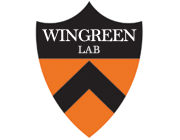Microbial Communities
Biofilms, surface-attached communities of bacteria encased in an extracellular matrix, are a major mode of bacterial life. We collaborate with the Bassler and Stone labs at Princeton to study many aspects of biofilms, from their formation and maturation to their eventual disassembly, mostly using Vibrio cholerae as a model organism. The detailed experimental observations on biofilms call for biophysical modeling, and to this end we have developed both agent-based and a continuum models that capture the distinct stages of the biofilm lifecycle. We also collaborate with the Shaevitz lab in studies of activity-driven pattern formation by the bacterium Myxococcus xanthus, which aggregates and forms fruiting bodies in response to starvation, and with the Gitai lab on how bacterial community morphology influences collective behavior. Finally, we are broadly interested in microbial diversity – why are there so many different species in essentially ever microbiota? We collaborate with the Donia lab to better understand the ecology of microbes in nature.
Bacteria-Phage Interactions
Bacteria and the viruses that infect them (phages) have been engaged in an arms race spanning eons. Recent advances in metagenomic sequencing that allow a deep look into the world of bacteria and phage have brought this topic once again to the forefront of microbiology. Moreover, advances in modeling microbial interactions and community dynamics make this topic an important frontier in biological physics and physical/mathematical biology. We collaborate with the Gitai lab on a broad range of topics, such as the molecular mechanisms of phage infection including the many recently discovered attack, defense, and counter-defense strategies, the coevolution of bacteria and phage, the ecological consequences of phage predation, and the application of phage therapy in the treatment of bacterial infections. We also collaborate with the Bassler lab on the fascinating topic of how phage participate in bacterial quorum-sensing communications.
Intracellular Phase Separation
Biologists have recently come to appreciate that eukaryotic cells are home to a multiplicity of non-membrane bound compartments, many of which form and dissolve as needed for the cell to function. The data are accumulating that these dynamical biomolecular condensates enable many central cellular functions – from ribosome assembly, to DNA repair, to cell-fate determination – and understanding them will be the key to unlocking some of the most recalcitrant problems in cell biology. It seems clear that these compartments represent a type of separated phase, but there are many open questions concerning their formation, how specific biological components are included or excluded, and how these structures influence physiological and biochemical processes. In these studies, we collaborate with the Brangwynne, Jonikas, and Joseph labs at Princeton.
Systems Immunology
The immune system functions across diverse scales, from the recognition of molecules to the evolution of populations. At all these levels, recent experimental innovations and theoretical approaches have created unprecedented opportunities for novel quantitative insights. The group has an expanding interest in multiple aspects of the immune system, with a particular focus on the fascinating process by which B cells undergo Darwinian evolution in the body to better combat pathogens. We collaborate with the Lynch lab at Princeton and the Nussenzweig lab at Rockefeller University.
Contact
Principal Investigator
240 Carl Icahn Laboratory
Washington Road
Princeton, NJ 08544
(609) 258-8476

